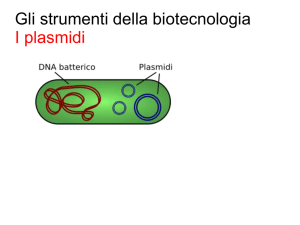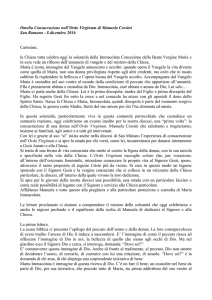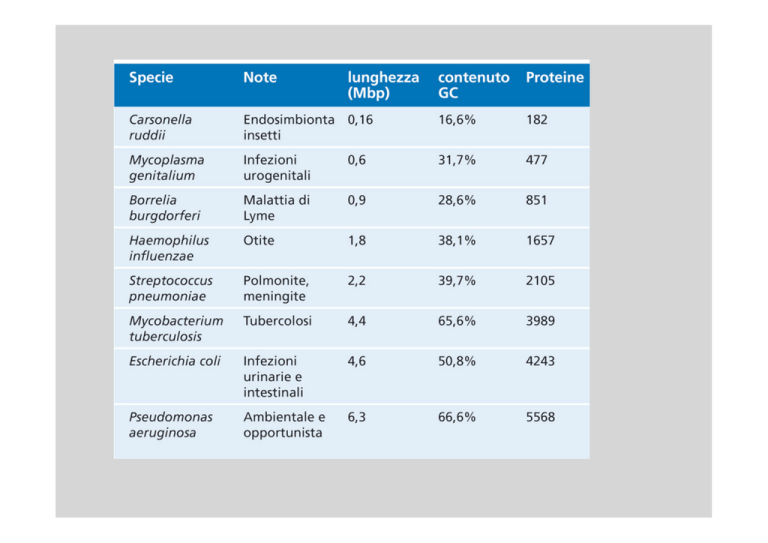
DNA Cloning
Primers universali
1. Sanger dideoxi sequencing
Shotgun sequencing
Sequenziare un largo numero di inserti plasmidici
(5-10 genomi equivalenti)
Allineamento computerizzato delle sequenze
in contiguous assemblies (contigs):
chiudere i gaps,ordinare in un contig unico
(cromosoma)
Second generation sequencing
techniques
No clonal amplification
Massively Parallel Sequencing
sequencing ~Gb per day
lower costs
Second generation sequencing
techniques
pyrosequencing
illumina
ion torrent
General features
• No clonal amplification is required
• Massively Parallel Sequencing
• Capable of sequencing ~Gb per day
• lower costs
Pyrosequencing:
•Gel free
•Parallel analyses
454 Pyrosequencing
Step 1: Sample preparation
1. Genomic DNA is isolated and fragmented.
2. Adaptors are ligated to single stranded DNA
3. This forms a library
4. The single stranded DNA
library is immobilised onto
proprietary DNA capture
beads
454 Step 2: Amplification
Water-based emulsion PCR
Picotitre plate
106 wells
Each bead is added to
a fibre-optic well
picotiter” plate
(1.6 million wells)
454 Step 4: Pyro-sequencing
1. Nucleotides are pumped
sequentially across the
plate
2. ~ 1 million reads
obtained during 1 run
3. Addition of nucleotides
to DNA on a particular
bead generates a light
signal
dATP,dCTP,dGTP, dTTP are sequentially
added and removed.
Incorporation releases pyrophosphate (PPi)
LIGHT
Light
Light is recorded by a camera
2: Large-Scale
Pyrosequencing
A computer can read the
light pattern from billions
of wells simultaneously.
(Sequencing of a bacterial
genome in 7h).
Informazioni derivate
dal sequenziamento
identificazione di tutti i potenziali
prodotti genici
+1
+2
+3
-1
-2
-3
ORFs Open Reading Frames
ORF selection (criteria)
1.Size >30-40 aa
2. presence of ribosomal
binding site
AUG
3. Codon usage
Ricerca di omologie
(sequenze codogeniche
conservate in altre specie)
Ricostruzione metabolica
BP1068
BP1069
BP1070
BP1071
ABC transporters
pstB,phosphate transport ATP-binding p
pstA,phosphate transport system permease p
pstC, phosphate transport system permease p
pstS, phosphate-binding periplasmic p precursor
Citrate cycle (TCA cycle)
BP1121 aceE, 2-oxoacid dehydrogenase subunit E1
BP1124 sucA, 2-oxoglutarate dehydrogenase E1 component
BP1125 sucB, dihydrolipoamide succinyltransferase
BP1126 odhL, dihydrolipoamide dehydrogenase
orf1 orf2 orf3 orf4 orf1 orf1 orf1 orf1
orf1 orf1 orf1 orf1 orf1 orf1 orf1 orf1
orf1 orf1 orf1 orf1 orf1 orf1 orf1 orf1
orf1 orf1 orf1 orf1 orf1 orf1 orf1 orf1
orf1 orf1 orf1 orf1 orf1 orf1 orf1 orf1
orf1 orf1 orf1 orf1 orf1 orf1 orf1 orf1
Gene array
Sonde
Ibridazioni molecolari
DNA dello
stesso ceppo
DNA di altri
ceppi
Hypothetical proteins
20-30% of total ORFs
Real ? Functional?
RNA (terreno A)
RNA (terreno B)
Un segmento di DNA potrebbe essere
Trascritto, ma non tradotto in proteina
2D gel electrophoresis of proteins
mass
proteoma
charge
Un gene batterico potrebbe essere
trascritto (e/o tradotto) solo durante
una infezione (in vivo), ma non in
Condizioni di crescita di laboratorio
(in vitro)
Regioni con contenuto GC anomalo
GC totale 47.3%
54.0%
52.7%
44.3%
42.5%
DNA acquisito da altre specie
GENOMIC ISLANDS (GEIs)
20-120 kb
7-20 kb
Island
Islet
GEI
apatogeno
patogeno
PATHOGENICITY ISLANDS
Contengono geni coinvolti nella patogenesi
Genoma del ceppo A
Genoma di un secondo ceppo B
Genoma di un terzo ceppo C
A=B=C ?
pangenoma
Streptococcus agalactiae
nuovi geni
identificati
ceppi sequenziati
33 nuovi geni per ogni
nuovo ceppo di S. agalactiae sequenziato
Pangenoma: insieme di geni
Identificati in individui della stessa
specie
Core genome
Variable genome
Pangenoma aperto
Pangenoma chiuso
Specie che vivono in nicchie isolate
o hanno scarsa capacità
di scambio genetico
Bacillus anthracis
pangenoma definito
da 4 soli genomi
2100 genes
4700 genes
>20000 genes
E. coli
Core genome
Average genome
pangenome
Pangenomi chiusi
Specie che vivono in nicchie isolate
o
hanno scarsa capacità
di scambio genetico
Bacillus anthracis
pangenoma definito
da 4 soli genomi
Radici di un albero
Bacino lacustre
Oceano
Cavo orale
F ig u r e 2 .1. U n e an aly s e m é t ag é n om i qu e t yp e de b anq u e s d e c lo n e s
E nvir onm ental s ampl e
DNA e xtr acti on
an d
sh ear
In ser t
l ib rar y
clo ni ng
R an dom
end
seq uen ci ng
A s sem bly
Pre dict
and
a nal yse
gen es
Meta bol is m
a nd
tr ans por t
Ph yl og eny
Note : l ’A DN d ’un éc ha nti ll on en ti e r e st is olé e t s tocké
o
s o us r
fr me de f a gm e nts da ns de s « ba n qu es »
Sour ce : a da pté de : http: / /l eg a c y. ca m e ra .c a li t2.n et/ im a g e s/ fi g ure _ m ap .j pg
En dépit des prog rès décisifs r éali sés en ma ti ère d’analyse métagéno mi que à par tir
In un corpo adulto
ci sono 1013 cellule
umane, e 1014
cellule batteriche
terreno
intestino
Alterazioni della flora batterica individuo-specifiche dovute a
abitudini alimentari, tipo di vita, fattori genetici
2) popolazioni batteriche
di particolari distrettti
1) campioni fecali
Abbondanza relativa delle specie microbiche
analisi qualitativa e quantitativa
di RNA ribosomiali 16S
Funzioni microbiota
Protezione verso i patogeni
Processamento nutrienti
degradazione di proteine, produzione di fenoli,
indoli, ammoniaca, aminoacidi, etc
-Altro?
Identifcare specie batteriche del microbiota
in comune fra piu’ individui
Correlare cambi del microbiota
a cambi dello stato di salute.
Nature 464, 59-65 (4 March 2010)
|
A human gut microbial gene
catalogue established by
metagenomic sequencing
Probiotics are beneficial bacteria and prebiotics
help them grow and flourish
Antibiotics might remove undesirable components of the
human microbiome.
Probiotics can introduce missing microbial components with
known beneficial
The human microbiome could be manipulated by “smart”
strategies to prevent and treat acute gastroenteritis,
inflammatory bowel disease, irritable bowel syndrome,
necrotizing enterocolitis, and a variety of other disorders.

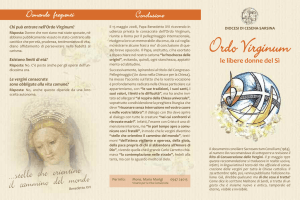
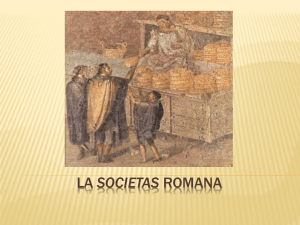
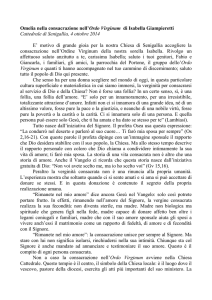
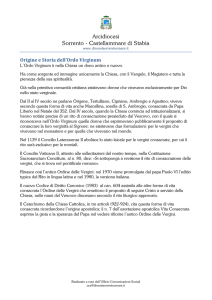

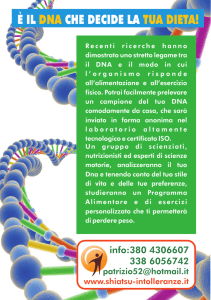
![mutazioni genetiche [al DNA] effetti evolutivi [fetali] effetti tardivi](http://s1.studylibit.com/store/data/004205334_1-d8ada56ee9f5184276979f04a9a248a9-300x300.png)
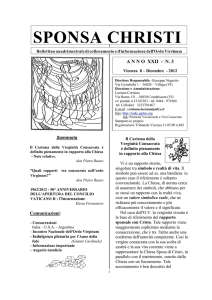
![ESTRAZIONE DNA DI BANANA [modalità compatibilità]](http://s1.studylibit.com/store/data/004790261_1-44f24ac2746d75210371d06017fe0828-300x300.png)
